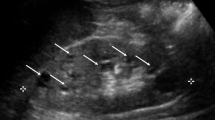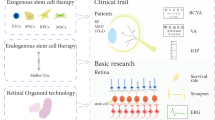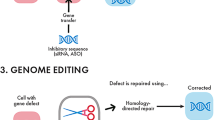Abstract
Generating animal models can explore the role of new candidate genes in causing diseases and the pathogenicity of a specific mutation in the underlying genes. These animals can be used to identify new pharmaceutical or genetic therapeutic methods. In the present experiment, we developed a rpe65a knock out (KO) zebrafish as a retinitis pigmentosa (RP) disease model. Using the CRISPR/Cas9 system, the rpe65a gene was KO in zebrafish. Two specific single-guide RNAs (sgRNAs) were designed for the zebrafish rpe65a gene. SgRNAs were cloned into the DR274 plasmid and synthesized using in vitro transcription method. The efficiency of Ribonucleoprotein (synthesized sgRNA and recombinant Cas9) was evaluated by in vitro digestion experiment. Ribonucleoprotein complexes were microinjected into one to four-celled eggs of the TU zebrafish strain. The effectiveness of sgRNAs in KO the target gene was determined using the Heteroduplex mobility assay (HMA) and Sanger sequencing. Online software was used to determine the percent of mosaicism in the sequenced samples. By examining the sequences of the larvae that showed a mobility shift in the HMA method, the presence of indels in the binding region of sgRNAs was confirmed, so the zebrafish model for RP disease established. Zebrafish is an ideal animal model for the functional study of various diseases involving different genes and mutations and used for evaluating different therapeutic approaches in human diseases. This study presents the production of rpe65a gene KO zebrafish models using CRISPR/Cas9 technology. This model can be used in RP pathophysiology studies and preclinical gene therapy experiments.





Similar content being viewed by others
Data availability
The datasets generated and analyzed during the current study are not publicly available but are available from the corresponding author upon request.
References
Mukherjee, P., Roy, S., Ghosh, D., & Nandi, S. (2022). Role of animal models in biomedical research: A review. Laboratory Animal Research, 38(1), 18.
Latta, L., Figueiredo, F., Ashery-Padan, R., Collinson, J., Daniels, J., Ferrari, S., et al. (2021). Pathophysiology of aniridia-associated keratopathy: Developmental aspects and unanswered questions. The Ocular Surface, 22, 245–266.
Khan, F. R., & Alhewairini, S. S. (2018). Zebrafish (Danio rerio) as a model organism. Current Trends in Cancer Management, 27, 3–18.
Meyers, J. R. (2018). Zebrafish: Development of a vertebrate model organism. Current Protocols Essential Laboratory Techniques, 16(1), e19.
Richardson, R., Tracey-White, D., Webster, A., & Moosajee, M. (2017). The zebrafish eye—A paradigm for investigating human ocular genetics. Eye, 31(1), 68–86.
Schmitt, E. A., & Dowling, J. E. (1999). Early retinal development in the zebrafish, Danio rerio: Light and electron microscopic analyses. Journal of Comparative Neurology., 404(4), 515–536.
Gestri, G., Link, B. A., & Neuhauss, S. C. (2012). The visual system of zebrafish and its use to model human ocular diseases. Developmental Neurobiology, 72(3), 302–327.
Veleri, S., Lazar, C. H., Chang, B., Sieving, P. A., Banin, E., & Swaroop, A. (2015). Biology and therapy of inherited retinal degenerative disease: Insights from mouse models. Disease Models & Mechanisms, 8(2), 109–129.
Min, K.-T., & Chang, K. (2011). Animal models of human disease. Academic Press.
Cassar, S., Dunn, C., & Ramos, M. F. (2021). Zebrafish as an animal model for ocular toxicity testing: A review of ocular anatomy and functional assays. Toxicologic Pathology, 49(3), 438–454.
Raghupathy, R., Patnaik, S., & Shu, X. (2013). Transgenic zebrafish models for understanding retinitis pigmentosa. Clon Transgen, 2(110), 2.
Salmaninejad, A., Bedoni, N., Ravesh, Z., Quinodoz, M., Shoeibi, N., Mojarrad, M., et al. (2020). Whole exome sequencing and homozygosity mapping reveals genetic defects in consanguineous Iranian families with inherited retinal dystrophies. Scientific Reports, 10(1), 19413.
Comander, J., Weigel-DiFranco, C., Maher, M., Place, E., Wan, A., Harper, S., et al. (2017). The genetic basis of pericentral retinitis pigmentosa—A form of mild retinitis pigmentosa. Genes, 8(10), 256.
Santhanam, A., Shihabeddin, E., Atkinson, J. A., Nguyen, D., Lin, Y.-P., & O’Brien, J. (2020). A zebrafish model of retinitis pigmentosa shows continuous degeneration and regeneration of rod photoreceptors. Cells, 9(10), 2242.
Bhardwaj, A., Yadav, A., Yadav, M., & Tanwar, M. (2022). Genetic dissection of non-syndromic retinitis pigmentosa. Indian Journal of Ophthalmology, 70(7), 2355–2385.
Rehman, A. U., Sepahi, N., Bedoni, N., Ravesh, Z., Salmaninejad, A., Cancellieri, F., et al. (2021). Whole exome sequencing in 17 consanguineous Iranian pedigrees expands the mutational spectrum of inherited retinal dystrophies. Scientific Reports, 11(1), 19332.
Nicoletti, A., Wong, D. J., Kawase, K., Gibson, L. H., Yang-Feng, T. L., Richards, J. E., et al. (1995). Molecular characterization of the human gene encoding an abundant 61 kDa protein specific to the retinal pigment epithelium. Human Molecular Genetics, 4(4), 641–649.
Cai, X., Conley, S. M., & Naash, M. I. (2009). RPE65: Role in the visual cycle, human retinal disease, and gene therapy. Ophthalmic Genetics, 30(2), 57–62.
Salmaninejad, A., Pourali, G., Shahini, A., Darabi, H., & Azhdari, S. (2022). MicroRNA and exosome in retinal-related diseases: Their roles in the pathogenesis and diagnosis. Combinatorial Chemistry & High Throughput Screening, 25(2), 211–228.
Salmaninejad, A., Motaee, J., Farjami, M., Alimardani, M., Esmaeilie, A., & Pasdar, A. (2019). Next-generation sequencing and its application in diagnosis of retinitis pigmentosa. Ophthalmic Genetics, 40(5), 393–402.
Schonthaler, H. B., Lampert, J. M., Isken, A., Rinner, O., Mader, A., Gesemann, M., et al. (2007). Evidence for RPE65-independent vision in the cone-dominated zebrafish retina. European Journal of Neuroscience, 26(7), 1940–1949.
Prado, D. A., Acosta-Acero, M., & Maldonado, R. S. (2020). Gene therapy beyond luxturna: A new horizon of the treatment for inherited retinal disease. Current Opinion in Ophthalmology, 31(3), 147–154.
Hu, M. L., Edwards, T. L., O’Hare, F., Hickey, D. G., Wang, J.-H., Liu, Z., et al. (2021). Gene therapy for inherited retinal diseases: Progress and possibilities. Clinical and Experimental Optometry, 104(4), 444–454.
Shankaran, S. S., Dahlem, T. J., Bisgrove, B. W., Yost, H. J., & Tristani-Firouzi, M. (2017). CRISPR/Cas9-directed gene editing for the generation of loss-of-function mutants in high-throughput zebrafish F0 screens. Current Protocols in Molecular Biology, 119(1), 31–39.
Kawahara, A. (2017). CRISPR/Cas9-mediated targeted knockin of exogenous reporter genes in zebrafish. In Genome editing in animals: Methods and protocols, pp. 165–173.
Westerfield, M. (2007). The zebrafish book: A guide for the laboratory use of zebrafish Danio (Brachydanio) rerio. Institute of Neuroscience, University of Oregon.
Williams, S. Y., & Renquist, B. J. (2016). High throughput Danio rerio energy expenditure assay. JoVE (Journal of Visualized Experiments)., 107, e53297.
Foster, S. D., Glover, S. R., Turner, A. N., Chatti, K., & Challa, A. K. (2019). A mixing heteroduplex mobility assay (mHMA) to genotype homozygous mutants with small indels generated by CRISPR-Cas9 nucleases. Methods X, 6, 1–5.
Brinkman, E. K., Kousholt, A. N., Harmsen, T., Leemans, C., Chen, T., Jonkers, J., et al. (2018). Easy quantification of template-directed CRISPR/Cas9 editing. Nucleic Acids Research, 46(10), e58.
Li, Y., Jia, Z., Zhang, S., & He, X. (2021). Progress in gene-editing technology of zebrafish. Biomolecules, 11(9), 1300.
Kroll, F., Powell, G. T., Ghosh, M., Gestri, G., Antinucci, P., Hearn, T. J., et al. (2021). A simple and effective F0 knockout method for rapid screening of behaviour and other complex phenotypes. eLife, 10, e59683.
Kalueff, A. V., Stewart, A. M., & Gerlai, R. (2014). Zebrafish as an emerging model for studying complex brain disorders. Trends in Pharmacological Sciences, 35(2), 63–75.
Kanungo, J., Cuevas, E., Ali, S., & Paule, M. G. (2014). Zebrafish model in drug safety assessment. Current Pharmaceutical Design, 20(34), 5416–5429.
Guyon, J. R., Steffen, L. S., Howell, M. H., Pusack, T. J., Lawrence, C., & Kunkel, L. M. (2007). Modeling human muscle disease in zebrafish. Biochimica et Biophysica Acta (BBA)-Molecular Basis of Disease, 1772(2), 205–215.
Gore, A. V., Monzo, K., Cha, Y. R., Pan, W., & Weinstein, B. M. (2012). Vascular development in the zebrafish. Cold Spring Harbor Perspectives in Medicine, 2(5), a006684.
Lieschke, G. J., Oates, A. C., Crowhurst, M. O., Ward, A. C., & Layton, J. E. (2001). Morphologic and functional characterization of granulocytes and macrophages in embryonic and adult zebrafish. Blood, The Journal of the American Society of Hematology, 98(10), 3087–3096.
Santoriello, C., & Zon, L. I. (2012). Hooked! Modeling human disease in zebrafish. The Journal of Clinical Investigation, 122(7), 2337–2343.
Cunliffe, V. T. (2003). Zebrafish: A practical approach. Edited by C. NÜSSLEIN-VOLHARD and R. DAHM. Oxford University Press. 2002. 322 pages. ISBN 0 19 963808 X. Price£ 40.00 (paperback). ISBN 0 19 963809 8. Price£ 80.00 (hardback). Genetics Research, 82(1), 79.
Carpio, Y., & Estrada, M. P. (2006). Zebrafish as a genetic model organism. Biotecnología Aplicada, 23(4), 265–270.
Nusslein-Volhard, C., & Dahm, R. (2002). Zebrafish. Oxford University Press.
Hamel, C. P., Tsilou, E., Pfeffer, B. A., Hooks, J. J., Detrick, B., & Redmond, T. (1993). Molecular cloning and expression of RPE65, a novel retinal pigment epithelium-specific microsomal protein that is post-transcriptionally regulated in vitro. Journal of Biological Chemistry, 268(21), 15751–15757.
Jacinto, F. V., Link, W., & Ferreira, B. I. (2020). CRISPR/Cas9-mediated genome editing: From basic research to translational medicine. Journal of Cellular and Molecular Medicine, 24(7), 3766–3778.
Gaj, T., Gersbach, C. A., & Barbas, C. F., 3rd. (2013). ZFN, TALEN, and CRISPR/Cas-based methods for genome engineering. Trends in Biotechnology, 31(7), 397–405.
Li, M., Zhao, L., Page-McCaw, P. S., & Chen, W. (2016). Zebrafish genome engineering using the CRISPR-Cas9 system. Trends in Genetics: TIG, 32(12), 815–827.
Gupta, D., Bhattacharjee, O., Mandal, D., Sen, M. K., Dey, D., Dasgupta, A., et al. (2019). CRISPR-Cas9 system: A new-fangled dawn in gene editing. Life Sciences, 232, 116636.
Flora, A., & Welcker, J. (2017). CRISPR genome engineering: Advantages and limitations. Rodent Research Models, 22.
Anzalone, A. V., Koblan, L. W., & Liu, D. R. (2020). Genome editing with CRISPR–Cas nucleases, base editors, transposases and prime editors. Nature Biotechnology, 38(7), 824–844.
Shah, A. N., Davey, C. F., Whitebirch, A. C., Miller, A. C., & Moens, C. B. (2015). Rapid reverse genetic screening using CRISPR in zebrafish. Nature Methods, 12(6), 535–540.
Varshney, G. K., Pei, W., LaFave, M. C., Idol, J., Xu, L., Gallardo, V., et al. (2015). High-throughput gene targeting and phenotyping in zebrafish using CRISPR/Cas9. Genome Research, 25(7), 1030–1042.
Mo, G., Ding, Q., Chen, Z., Li, Y., Yan, M., Bu, L., et al. (2014). A novel mutation in the RPE65 gene causing Leber congenital amaurosis and its transcriptional expression in vitro. PLoS ONE, 9(11), e112400.
Pourghadamyari, H., Rezaei, M., Ipakchi-Azimi, A., Eisa-Beygi, S., Basiri, M., Tahamtani, Y., et al. (2019). Establishing a new animal model for muscle regeneration studies. Molecular Biology Research Communications, 8(4), 171.
Pourghadamyari, H., Rezaei, M., Basiri, M., Tahamtani, Y., Asgari, B., Hassani, S.-N., et al. (2019). Generation of a transgenic zebrafish model for pancreatic beta cell regeneration. Galen Medical Journal, 8, e1056.
Rezaei, M., Basiri, M., Hasani, S.-N., Asgari, B., Kashiri, H., Shabani, A., et al. (2019). Establishment of a transgenic zebrafish expressing GFP in the skeletal muscle as an ornamental fish. Galen Medical Journal, 8, e1068.
Funding
Funding was provided by Mashhad University of Medical Sciences (Grant No. 991444).
Author information
Authors and Affiliations
Corresponding author
Additional information
Publisher's Note
Springer Nature remains neutral with regard to jurisdictional claims in published maps and institutional affiliations.
Rights and permissions
Springer Nature or its licensor (e.g. a society or other partner) holds exclusive rights to this article under a publishing agreement with the author(s) or other rightsholder(s); author self-archiving of the accepted manuscript version of this article is solely governed by the terms of such publishing agreement and applicable law.
About this article
Cite this article
Mirzaei, F., Eslahi, A., Karimi, S. et al. Generation of Zebrafish Models of Human Retinitis Pigmentosa Diseases Using CRISPR/Cas9-Mediated Gene Editing System. Mol Biotechnol (2023). https://doi.org/10.1007/s12033-023-00907-8
Received:
Accepted:
Published:
DOI: https://doi.org/10.1007/s12033-023-00907-8




